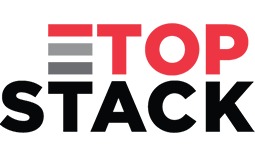Employment Gaps in Your Resume? Here’s How to Address Them

While employment gaps are common on a resume, there is a trick involved with explaining them to prospective employers. Many times these gaps are planned for, such as the birth of a child or going back to accomplish a degree. Other times the unexpected occurs, from a job layoff to a major illness. Either way, there are blank spaces in your resume that are clearly noticeable. How you explain these holes will affect your future job prospects. Fortunately, this article will help you prepare for your discussions with hiring managers. Here are some commonly asked questions and answers from workers with a gap in their work history.
Should You Mention the Resume Gap?
First, if the gap was several years ago and you’ve been successfully employed since, you probably won’t need to mention it. Keep in mind there is no rule that you have to include all your experience on a resume. This is especially true for workers that have been employed for a decade or longer. In most cases, your early career history isn’t necessary to the current job search if you’re applying for a mid- or later career track. Most recruiters will suggest just keeping the history to the last 15-years or so if you are applying for a management position.
There are several ways to make a more recent gap in your work history more appealing to employers. For example:
- You can use dates to make the gap stand out less. Try removing the month from the date history and instead just list the year.
- You can use resume formatting to make the gaps less obvious, like putting the dates of employment in non-bold type.
- Start your resume with a summary at the top to draw the reviewer’s eye to your accomplishments and skills.
- Include any experience and skills you gained during the employment gap. Did you volunteer; take a class or a sabbatical? List it on your resume as a valuable skill.
If the gap was recent, the employer or recruiter is certain to notice it and comment on it. In any case, be prepared to explain it clearly and succinctly to the recruiter or hiring manager. What was your rationale for the break? If the break wasn’t voluntary, what happened to put you in that situation? Emphasize the issue has been resolved and you’re ready to return to work.
If you were laid off, it’s a very good idea to provide the potential employer with documentation of your excellent performance before the layoff. A decision to conduct company downsizing is a decision that employees can’t control. It’s important to show you were a solid employee prior to the economic downturn the company faced. Part of an active networking process is to ask for recommendations now before you need them during the job search.
Networking With a Recruiter
The best networking advice we can share is to speak today with a recruiter. These professionals are on the prowl for you; employers hire staffing agencies to find the best talent.
Contact the staffing professionals at Top Stack today if you’re looking for a career shift. We can supplement your professional networking efforts and help you find the perfect fit.






